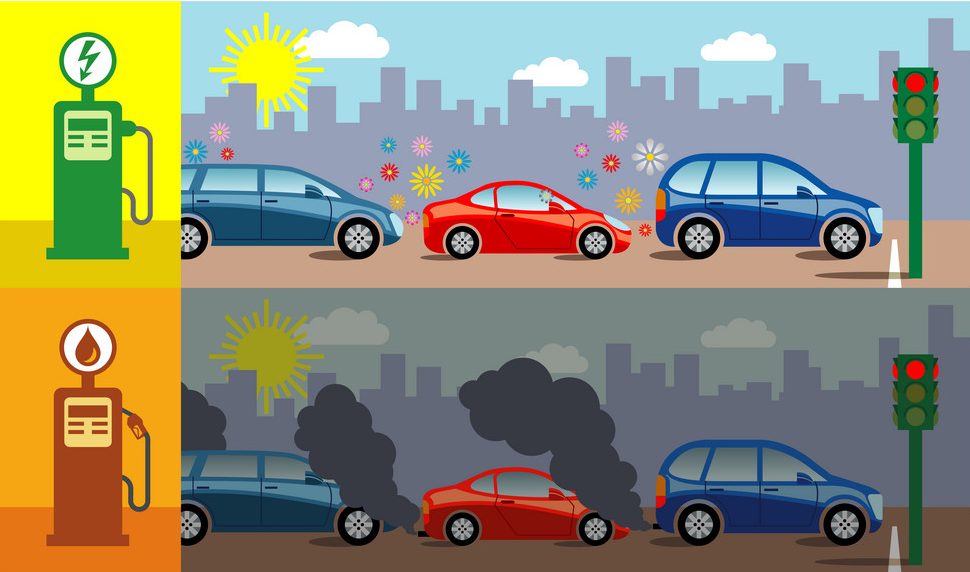
Push for Change
The auto industry is one of the main sources of pollutant emissions and energy consumption, however, times are changing. Sustainability is a growing concern for all of manufacturing. Due to climate change and environmental degradation, governments and society are pushing automotive companies to adapt (Capgemini Research Institute, 2020). New regulatory obstacles or legal challenges have also caused huge changes in the industry (Industry Today, 2020). Sustainable manufacturing encompasses minimizing waste and reducing environmental impact by adapting product design, manufacturing and operational principles (Mayco International, 2020). While it can be difficult to adapt to these changes, there are many other incentives for the industry to change.
Helping the environment is not the only benefit. Others include increased brand value, increased market opportunities, lower expenses due to reusing old materials and achieving cheaper waste handling costs (Mayco International, 2020). Manufacturers with environmentally friendly practices have less hoops to jump through and are more popular for new investors (Industry Today, 2020). With sustainability becoming a popular trend, many car buyers are enticed by company’s efforts to reduce their environmental impact. Not only are they more popular with investors, but also potential new employees. Benefits such as these are hard to pass up. So how are automotive companies shifting to satisfy these trends?
 New Strategies
New Strategies
In order to conform to these standards, 62% of automotive organizations have developed strategies with well-defined goals and targets (Capgemini Research Institute, 2020). These strategies include improving materials efficiency, eliminating waste during the production of parts, and promoting regenerative practices for research conservation. Finding ways to reuse materials like melting steel, plastic, aluminum and fabrics to be reworked are greatly reducing waste production (Technology.org, 2019). This has been a huge focus during the movement towards sustainability.
Old engines were inefficient and created much waste. New cars now utilize intake values that burn fuel more efficiently with less waste production. In the last few years, manufacturers made the option to choose fuel alternatives to reduce the intake of fossil fuels (Technology.org, 2019). While these efforts were successful, another effort proved to be even more beneficial.

Lighter cars help reduce fuel consumption as well. Most cars are made from steel or aluminum. Now, companies like Tesla and BMW are using higher performance materials like light alloys instead of carbon fiber. Development of new materials such as carbon-fiber-reinforced plastics (CFRP) can be 3D printed and could lead to much cheaper methods of reducing the weight of vehicle parts as well (Keronite, 2019). This use of light-weight composites could also cut costs in manufacturing, making car companies recently focus their attention on this research (Industry Today, 2020). New materials such as these are expected to emerge at an increasing rate.
While not as common, companies are also researching ways to design the interior of vehicles with renewable raw materials and other recycled materials. These include materials like hemp fibers which are found to be less expensive, have lower density, high strength and are more environmentally friendly (Wellbrock, 2020). As mentioned previously, the popularity of sustainability draws wanted attention. It is predicted that the visibility of these materials in the interior of vehicles will become more prominent in order to appeal to customers (Wellbrock, 2020).
 Future of Electric Vehicles
Future of Electric Vehicles
As the movement into lighter and more efficient vehicles continues, there is one trend that is quickly becoming very popular. Electric vehicles have led to 26% reduction in emissions per car (Capgemini Research Institute, 2020). Analysts predict over fifty percent of vehicles driven in twenty years will be electric (Industry Today, 2020).
While there are still some negative effects from electric battery creation and charging, there are ways to reduce them. Companies like GM and Tesla are combatting the environmental effects of sourcing and charging batteries that use fossil fuels by innovating more green batteries. These batteries can hold charges for longer distances and, therefore, require reduced charging times (Industry Today, 2020). Lessening the amount of charging time will directly decrease the amount of required fossil fuels and help sustain our environment.
As you can see, alterations to the automotive industry are in the works. Many incentives are expected to change the industry drastically. The shift to sustainable manufacturing isn’t easy, but it is on its way. From reusing recycled materials and reducing waste, all the way to lighter and more efficient cars, automotive companies are rapidly innovating ways to reduce the environmental impact on our planet.
Sources:
Capgemini Research Institute. (2020). The Automotive Industry in the Era of Sustainability.
Industry Today. (2020, November 2). Sustainable manufacturing: A growing automotive trend. Industry Today.
Keronite. (2019). What’s new in materials science for the automotive industry?
Mayco International. (2020, July 30). The role of sustainable manufacturing in the automotive industry.
Technology.org. (2019, May 14). The Automotive Industry – Greener by the day, thanks to technology.
Wellbrock, W., Ludin, D., Rohrle, L., & Gerstlberger, W. (2020, December 30). Sustainability in the automotive industry, importance of and impact on automobile interior – insights from an empirical survey. International Journal of Corporate Social Responsibility.
